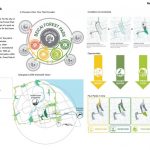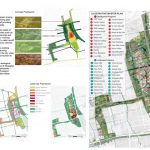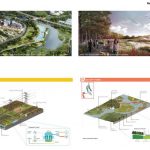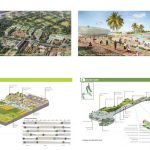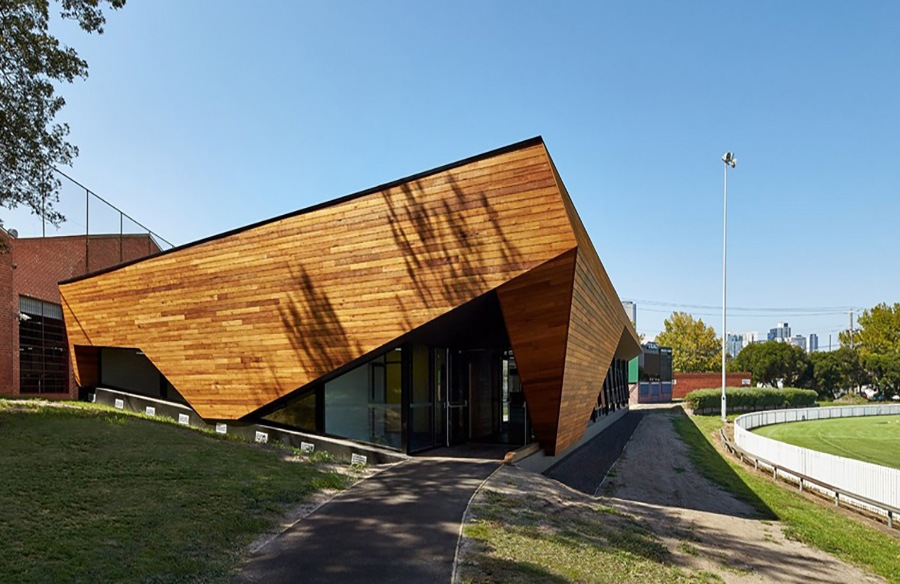Slated as one of eight “green wedges” for the city of Shanghai’s 2040 Greenbelt Vision, the 2,600 acre Beicai Forest Park looks to reimagine the concept of a park. Deemed as a global city, Shanghai will deliver a park that is self-sustaining and a provider for the city’s future demands.
Located in the heart of the Pudong District, the project’s site conditions are populated with electrical pylons, water systems that are polluted and stagnant, a diminishing and disjointed agricultural harvesting system and lack of adequate recreational spaces, the design looks to improve and enhance the site with prominent resources.
RTF Sustainability Awards 2017
First Award | Category: Cultural (Built)
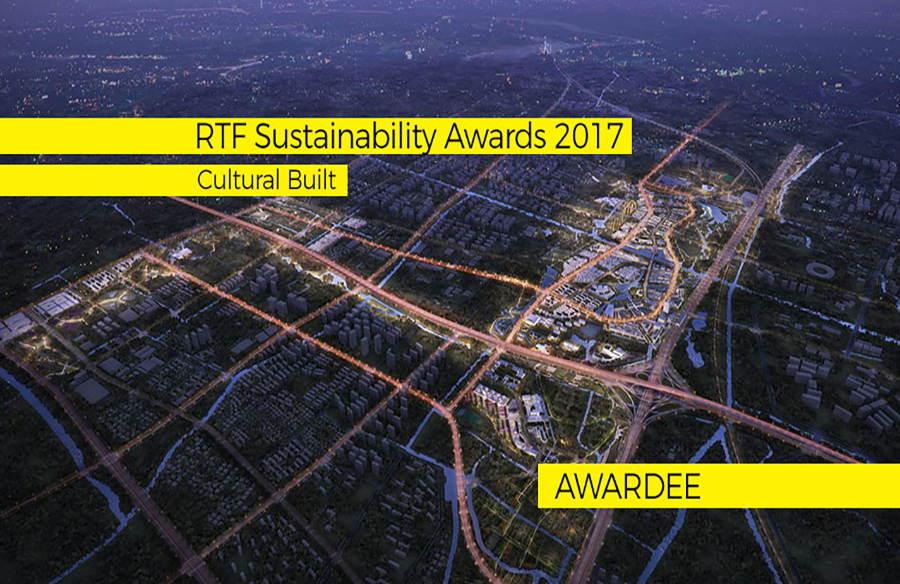
| Project Details | |
| Architect: | Joseph Rosenberg |
| Team Members: | Vaughan Davies Luan Li Xiaobei Yang Joseph Rosenberg |
| Country: | United States |
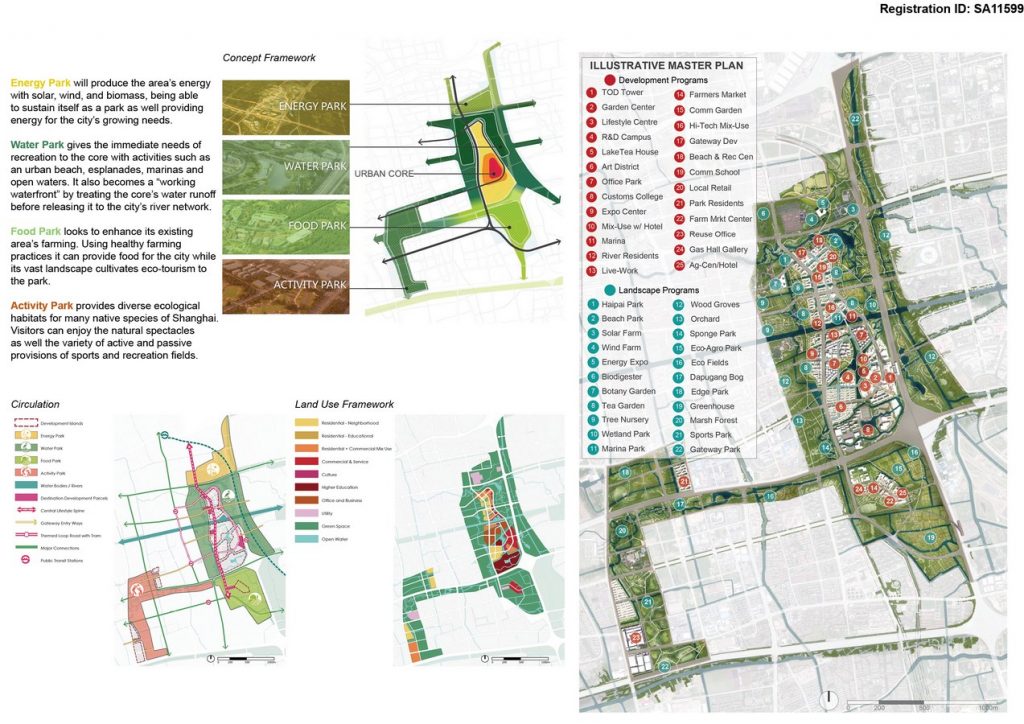
©Aecom
Beicai Forest Park’s concept lies in its immense ability to harness resources within itself: renewable energy, clean water, agricultural production, recreational amenities and habitat creation. Thus for each resource respectively, along with an urban core, Beicai Park gives four distinct parks within one: Energy Park, Water Park, Food Park and Activity Park. With a surplus of resources it yields it is also able to give back to the city, creating a net positive park.
Energy Park will supply the area’s energy stemming from solar, wind and biomass. As the vast open space of the park will naturally provide these, it will demonstrate and educate visitors of renewable resources’ capacity. Being able to provide for all of Beicai Park, Energy Park showcases it ability to address the potential of future parks. Wind and solar technologies will be utilized and demonstrated onsite to provide clean energy source. Green waste will be sent through bio digester burner for energy generation.
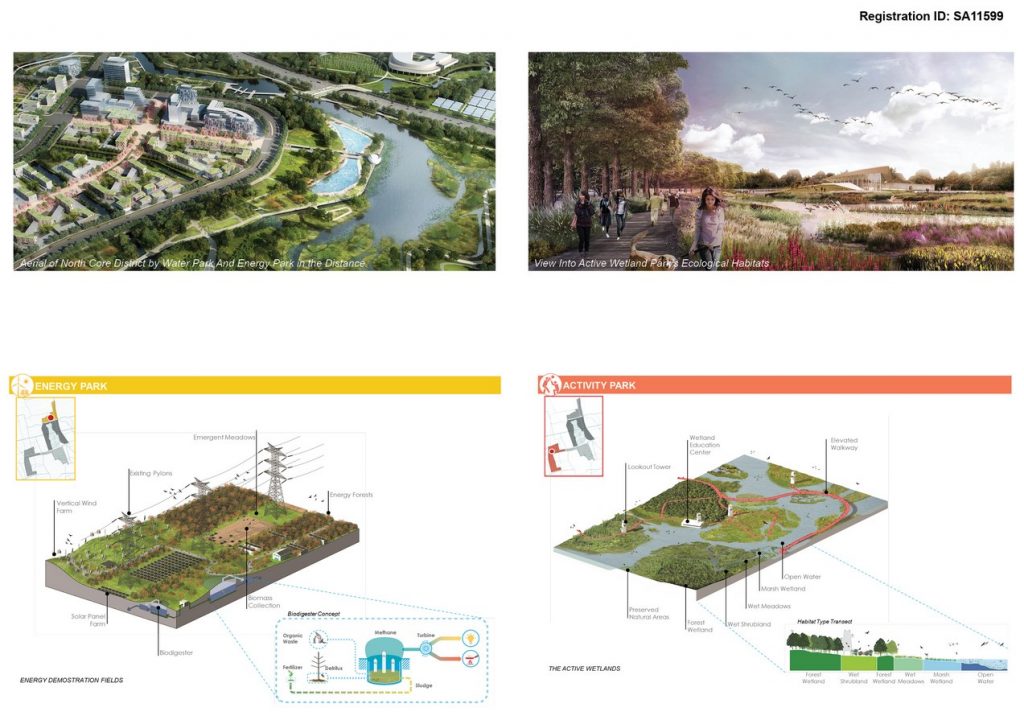
©Aecom
The urban core hosts transit-oriented developments with residential, commercial and offices; Water Park encases the core giving it the immediate needs of recreational amenities. With urban beach, esplanades, marinas and open waters, it will be a park brimming with aquatic activities. It also becomes a working waterfront by treating the core’s storm water runoff before releasing it to the city’s river network. Collected graywater will be cleaned through the urban wetland parks for potential reuse. Water serves both important landscape and sustainability functions in this demonstration zone.
Food Park targets the existing area’s farming to enhance it to a city scale production. Using healthy farming practices-such as sustainable crop rotations, agri-hoods, farm to table restaurants and farmer markets-it can provide food for the city while its vast varying cultivated landscape draws eco-tourism to the park. Unique restaurants and culinary venues will be set up for people to enjoy farm-to-table experiences.
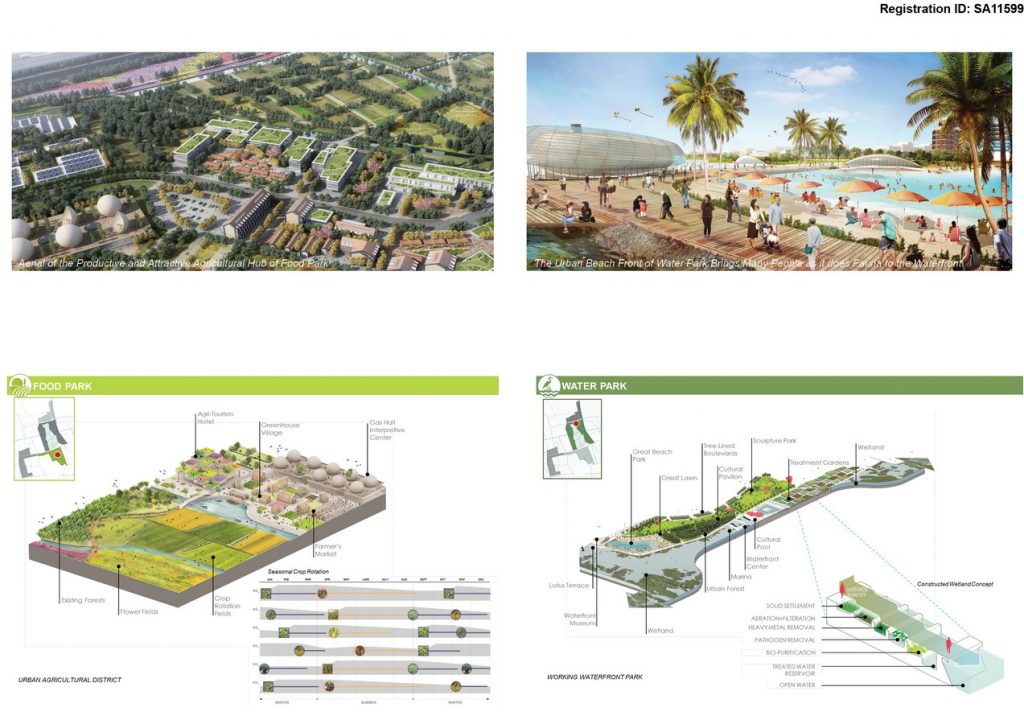
©Aecom
Activity Park provides ecological habitats for hundreds of native species of Shanghai. Visitors enjoy the natural spectacles as well the variety of trails and recreation fields. Education amenities will be set up to engage school kids for hands-on learning activities.
Beicai Forest Park will not only be a solace to the bustling city, but meet its needs of resources and exceed for the provisions of Shanghai. Beicai Park exhibits a park that not only can sustain itself, but creates a new standard and a future model of parks.
- ©Aecom
- ©Aecom
- ©Aecom
